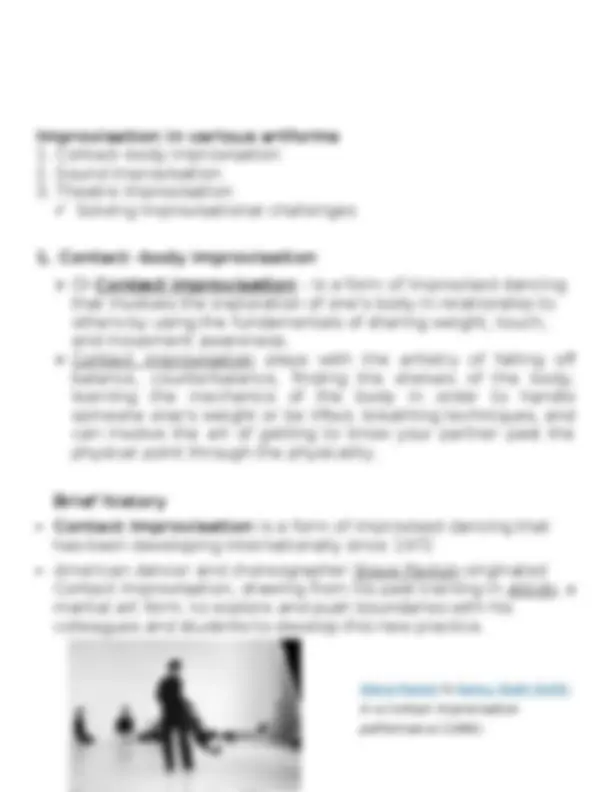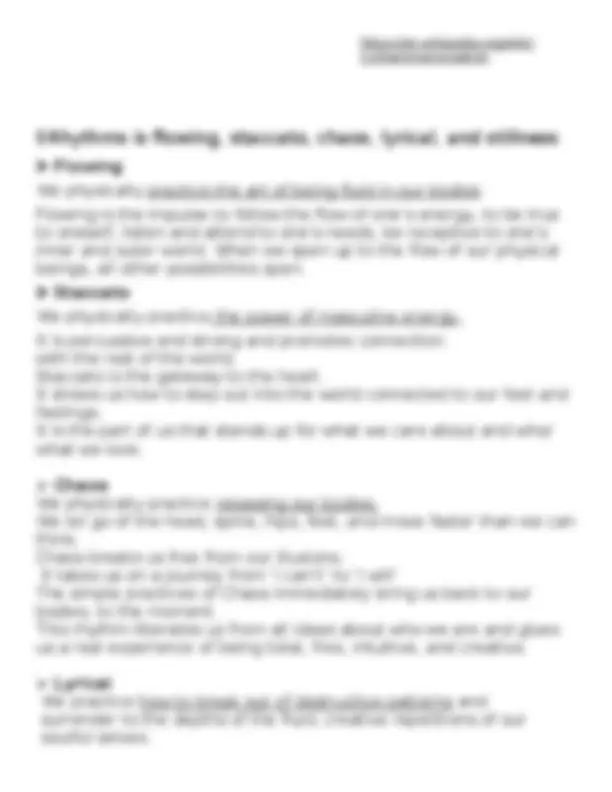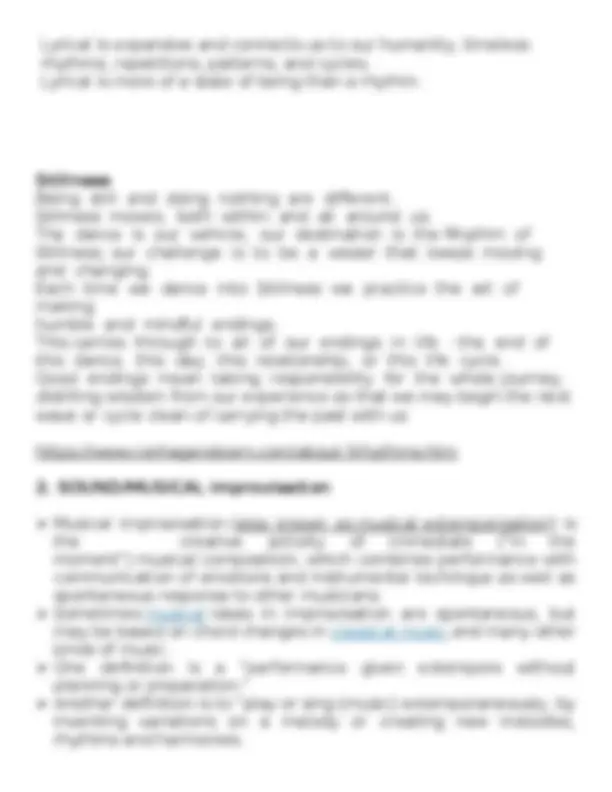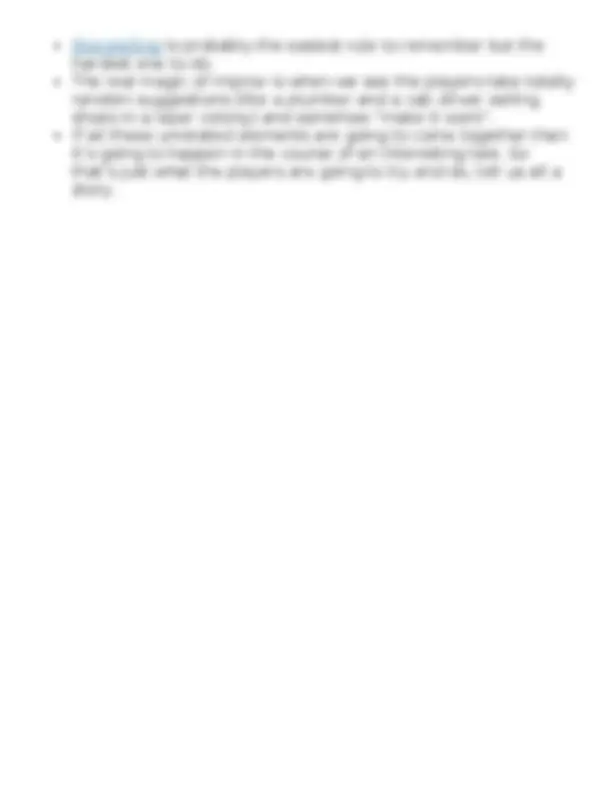






Study with the several resources on Docsity

Earn points by helping other students or get them with a premium plan


Prepare for your exams
Study with the several resources on Docsity

Earn points to download
Earn points by helping other students or get them with a premium plan
Community
Ask the community for help and clear up your study doubts
Discover the best universities in your country according to Docsity users
Free resources
Download our free guides on studying techniques, anxiety management strategies, and thesis advice from Docsity tutors
Art Appreciation report about Improvisation, Powerpoint presentation
Typology: Lecture notes
1 / 8

This page cannot be seen from the preview
Don't miss anything!





Objective
https://en.wikipedia.org/wiki/ Contactimprovisation
Flowing We physically practice the art of being fluid in our bodies Flowing is the impulse to follow the flow of one’s energy, to be true to oneself, listen and attend to one’s needs, be receptive to one’s inner and outer world. When we open up to the flow of our physical beings, all other possibilities open. Staccato We physically practice the power of masculine energy. It is percussive and strong and promotes connection with the rest of the world. Staccato is the gateway to the heart. It shows us how to step out into the world connected to our feet and feelings. It is the part of us that stands up for what we care about and who/ what we love. Chaos We physically practice releasing our bodies. We let go of the head, spine, hips, feet, and move faster than we can think. Chaos breaks us free from our illusions. It takes us on a journey from ‘I can’t’ to ‘I will’ The simple practices of Chaos immediately bring us back to our bodies, to the moment. This rhythm liberates us from all ideas about who we are and gives us a real experience of being total, free, intuitive, and creative. Lyrical We practice how to break out of destructive patterns and surrender to the depths of the fluid, creative repetitions of our soulful selves.
Lyrical is expansive and connects us to our humanity, timeless rhythms, repetitions, patterns, and cycles. Lyrical is more of a state of being than a rhythm. Stillness Being still and doing nothing are different. Stillness moves, both within and all around us. The dance is our vehicle, our destination is the Rhythm of Stillness; our challenge is to be a vessel that keeps moving and changing. Each time we dance into Stillness we practice the art of making humble and mindful endings. This carries through to all of our endings in life - the end of this dance, this day, this relationship, or this life cycle. Good endings mean taking responsibility for the whole journey, distilling wisdom from our experience so that we may begin the next wave or cycle clean of carrying the past with us https://www.ronhagendoorn.com/about-5rhythms.htm
2. SOUND/MUSICAL improvisation Musical improvisation (also known as musical extemporization) is the creative activity of immediate ("in the moment") musical composition, which combines performance with communication of emotions and instrumental technique as well as spontaneous response to other musicians. Sometimes musical ideas in improvisation are spontaneous, but may be based on chord changes in classical music and many other kinds of music. One definition is a “performance given extempore without planning or preparation.” Another definition is to "play or sing (music) extemporaneously, by inventing variations on a melody or creating new melodies, rhythms and harmonies.
doing and come up with an answer. When you ask your partner and open ended question, you put the burden of coming up with something "interesting" on your partner - so you are no longer doing a scene together but forcing one person has to do more work than you are willing to do. 3) You don't have to be funny.